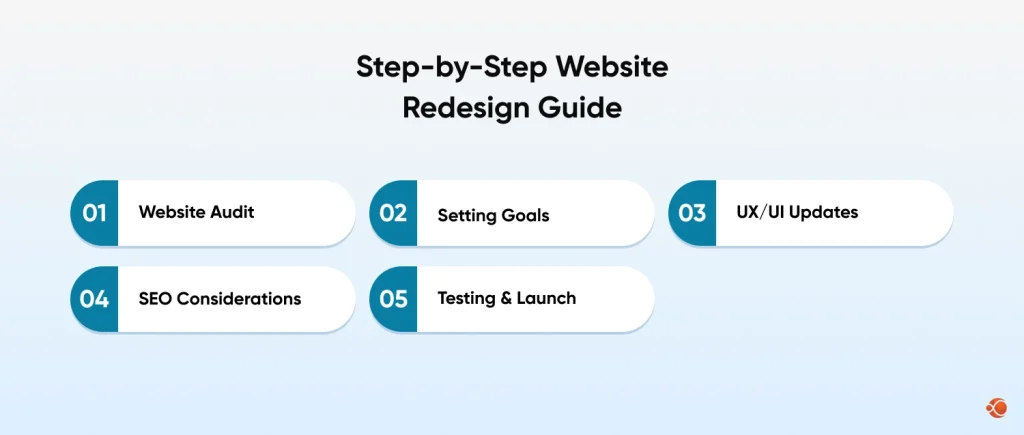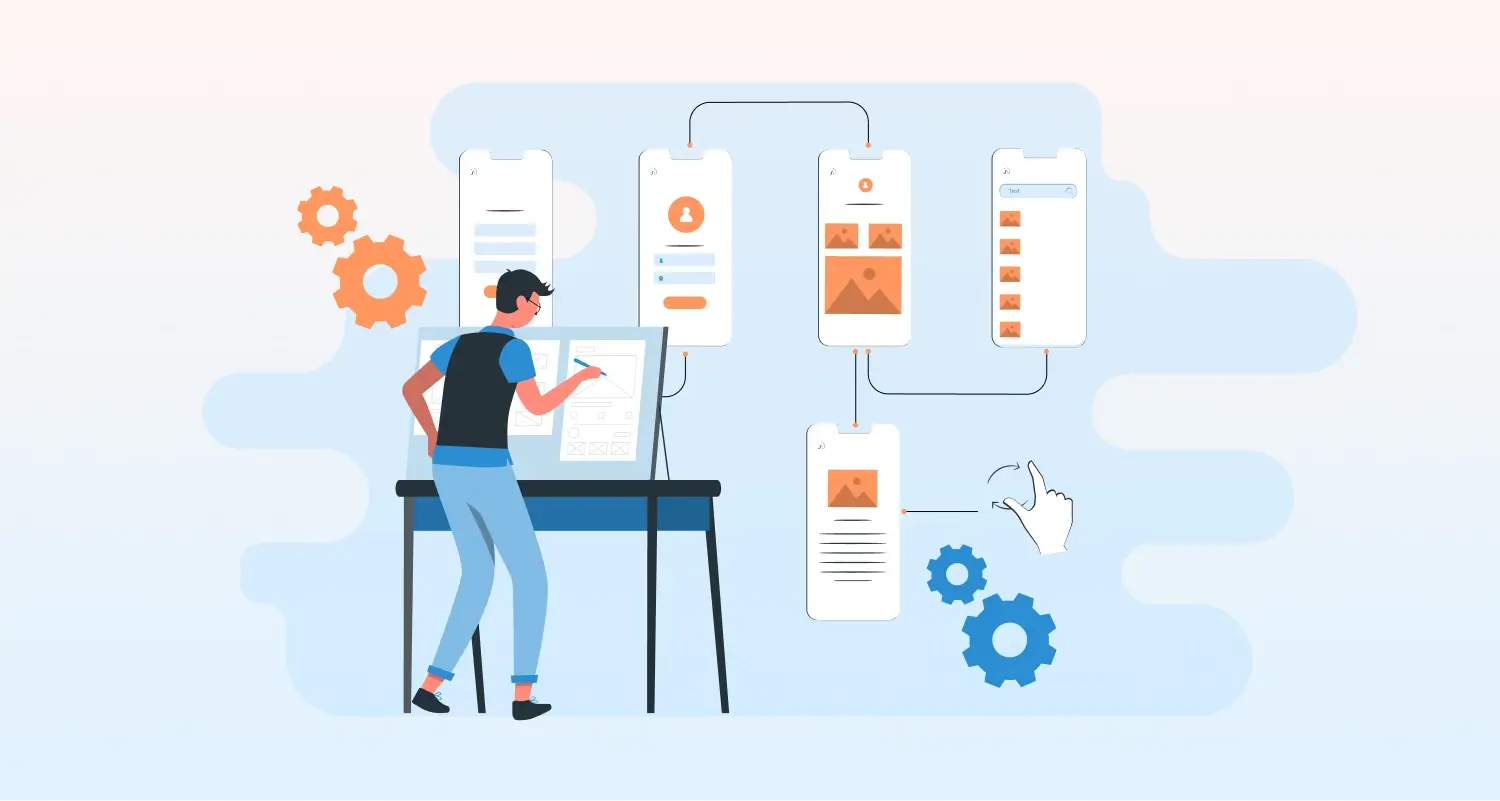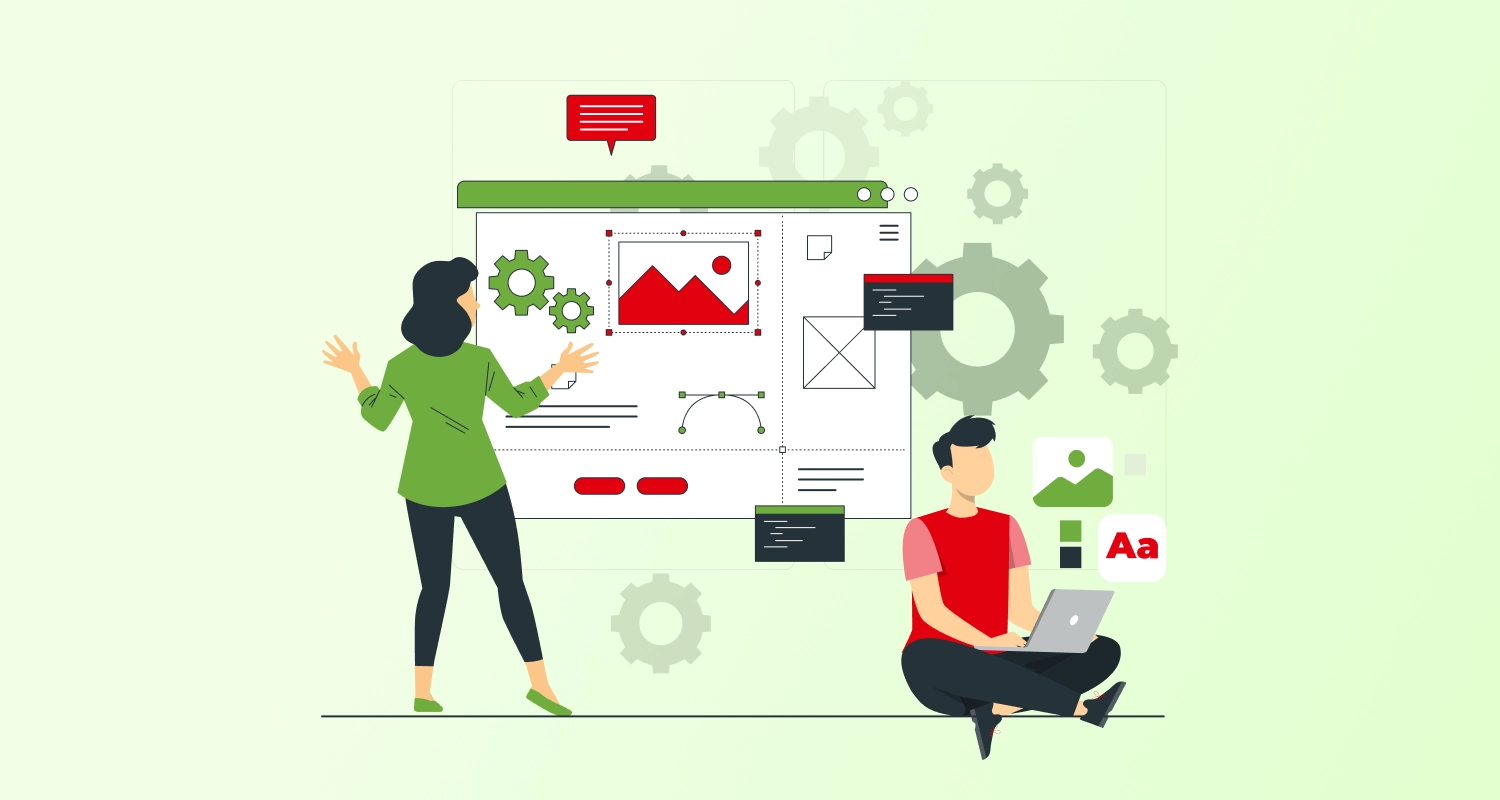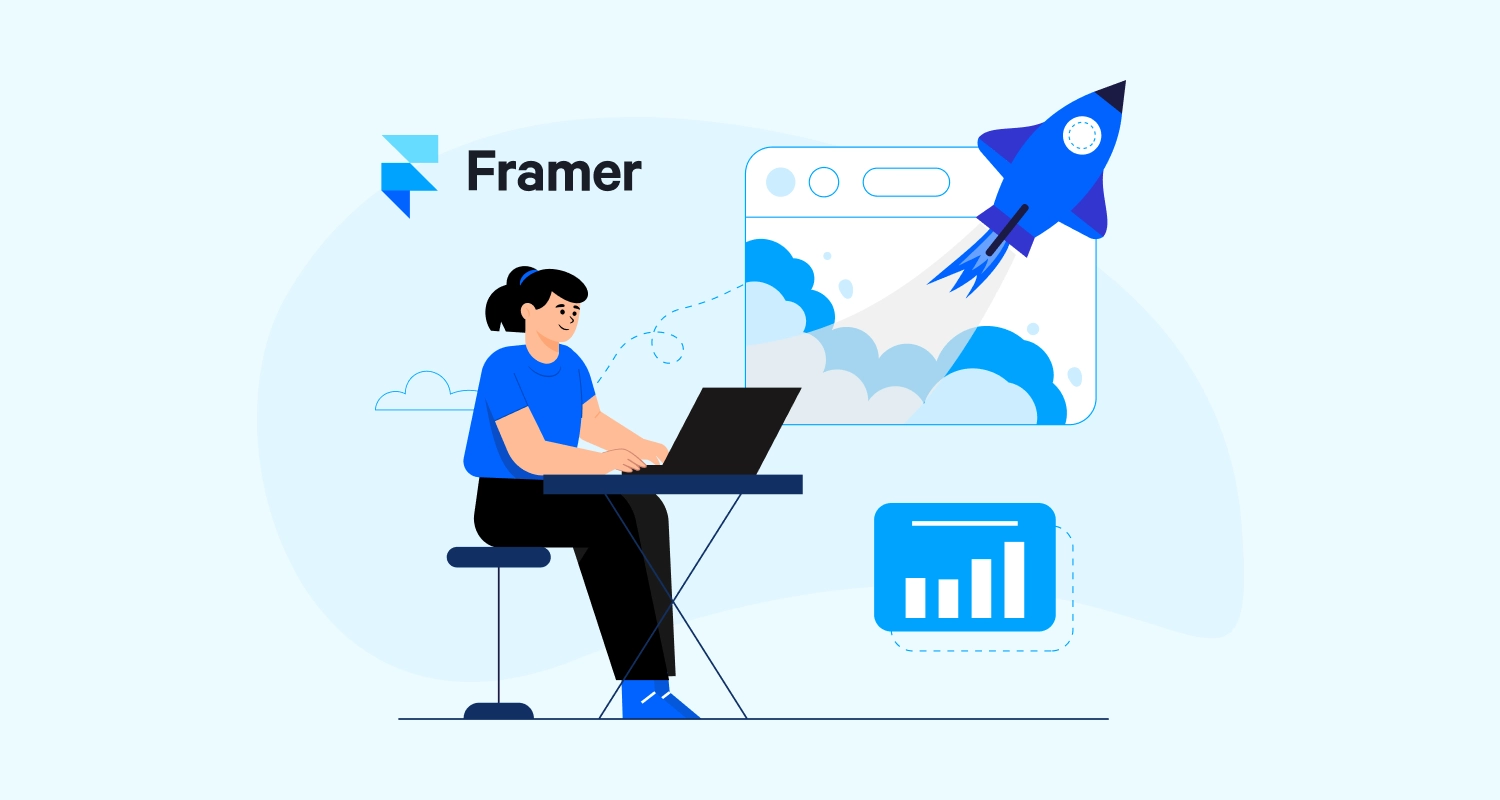Quick Summary: Why is web design important? Because your website is either costing you customers or making you money. A strategic design doesn’t just look good, it builds trust, convert visitors and keeps people engaged. Poor design traffic straight to your competitors. Discover how the right approach transforms your site into a revenue generating powerhouse.
Take a pause and think about your favorite website. It’s not just the beautiful logo or the smooth interface, but the effortless navigation and speed, a great experience of web design. Your website is like your primary salesperson or brand manager. And for any company aiming for sustainable growth, ignoring its online presence is non-negotiable. Recent studies have shown that judgments on web site credibility are 75% based on a web site’s overall aesthetics and these judgments are immediate as they occur as fast as 3.42 seconds.
This guide not only tells you why is web design important but also how strategic sites directly impact your bottom line and unlock serious digital presence.
What is Web Design?
Web design is a process of planning, conceptualizing, creating, and arranging content that is executed for the internet. It includes designing the user interface and the user experience. A well-designed website harmonizes both the elements. It’s not always about a pretty-looking website, but it’s about how simple, easy, and fast it is. This combination is the foundation that determines the true importance of website quality for a business. For complete services, many businesses look for a web development company.
Why Businesses Outgrow Their Current Websites
Many businesses start with a simple website, but once a business grows, its services evolve, and that initial setup often becomes a bottleneck. Here are some common reasons that successful businesses find themselves needing a significant digital upgrade.
- Scale and Complexity: An initial site might have 5-10 pages, but as the business grows, the website pages grow to hundreds, with more complex filtering, richer content formats, and integration with sophisticated back-end systems. The old site wasn’t built for this complexity.
- Brand Evolution: As soon as the brand finds its voice, audience, mission, and visual identity change. An outdated website can look completely different from the current, mature business, leading to confusion and distrust among potential clients.
- Technological Debt: Web technologies change at lightning speed. Older sites often run on outdated platforms, code, or security protocols. This “technical debt” makes simple updates difficult, slows the site down, and exposes it to security risks, severely diminishing the importance of web page design and functionality.
- New Business Goals: Maybe the original goal was just to provide information. But now the goal would be different, like increasing leads, selling products, and hosting a membership area. This requires changes in the website.
What are the Benefits of Quality Web Design
A strategic, high-quality website is an investment; it’s a core asset and not merely a cost. Understanding these tangible benefits clearly illustrates the importance of web design for sustained commercial success.
Boosting Conversion Rates
A primary benefit of effective web design is its ability to guide users towards an action. Conversion rate optimization (CRO) is built into the site’s DNA. This means using clear visual hierarchy, call-to-action, compelling social proof, and smooth checkout processes.
For instance, if your checkout page is confusing or requires too many clicks, users will leave. A simplified, smooth user flow increases the number of visitors who complete a purchase or sign up for your service.
Reducing Bounce Rate
The “Bounce Rate” is the amount of visitors who leave your site after viewing it once. A quality web design makes sure that users know where they are and where they need to go next. The site feels more professional, trustworthy, and inviting immediately upon arrival. Keeping users engaged and moving through the site increases the chances of them converting.
Building Brand Consistency and Recognition
Your website is the utmost expression of your brand. A good design makes sure that your brand’s voice, colour palette, and personality stay consistent across any device. This consistency is important for long-term brand recognition. For businesses seeking a full suite of services, consider the complete nature of services offered by specialist firms to build a web app.
Improving Search Engine Optimization (SEO)
Google and other search engines care deeply about how users interact with your site. A quality website is inherently SEO-friendly for two major reasons:
- Technical SEO: Good design and developers build site with clean, efficiency codes that search engine crawlers can easily read and index. They optimize images, use proper heading structure and make sure the site loads quickly.
- User experience signals: Search engines track metrics like time spent on site and bounce rate. If users enjoy your site, they stay longer, which signals to Google that your site is a high-quality, relevant source of information. This is one of the most powerful reasons for the importance of responsive web design and overall quality.
4 Signs Your Website Needs a Redesign
How do you know if your existing website is a growth catalyst or a severe drag on your business? Look for these clear warning signs; they often point directly to issues that diminish the importance of effective web design within your current setup.
Outdated Visuals and Branding
If your site looks five or ten years old, then the visitors will immediately notice. Old-fashioned layouts, low-quality images, and clunky animation look amateur and less trustworthy. Hence, your site must match modern professional businesses today.
Poor Mobile Experience
This is mandatory and essential for success, as half of the global traffic now comes from mobile devices. If your site requires users to zoom, has tiny tap targets, or loads slowly on phones, you’re actively driving customers away. Investing in responsive website design services make sure your site adapts to every screen size while aligning with Google’s mobile-first indexing policy.
Slow Loading Speed
Google study has shown that 53% of users abandon pages or sites that take more than 3 seconds to load. Slow speeds are often caused by bloated code or unoptimized images that affect user experience and are a main ranking factor for search engines.
Declining Traffic or Conversions
This is the most direct business indicator. If visitor volume is high but your sales or lead submissions are dropping, your website is failing. This suggests a critical SEO issue or a conversion problem (poor UX).

Key Elements of a Successful Web Design
A successful website is one that achieves your business goals. These goals are met by focusing on a few critical, interwoven design elements.
| Key Element | Best Practices / Techniques |
| Intuitive or Responsive User Experience (UX) | – Logical structure: information grouped naturally- Clear labeling for menus & buttons- Error prevention with easy-to-fill forms and clear error messages |
| Visual Hierarchy & Aesthetics | – Use size, color, contrast, and spacing- Typography that improves readability & sets tone- Color psychology to influence mood & actions- Adequate spacing to prevent clutter |
| Mobile-First Approach | – Prioritize key content & CTAs on small screens- Adopt responsive design principles- Follow “less is more” for smaller layouts |
| Fast Page Load Speed | – Reduce images size- Minify CSS, HTML, JavaScript- Enable caching for repeat visitors |
| Clear Calls-to-Action (CTAs) | – Strong color and contrast so they’re easy to spot- Action-oriented language like “Get Started,” “Download Now”- Contextual placement aligned with page content |
How AI Is Enhancing Web Design
Web design is continuously evolving and the latest example of change would be artificial intelligence. AI isn’t replacing human designers, but it is improving efficiency, personalization and data-driven decision making.
AI for Prototyping and Wireframing
New AI tools can generate basic website layouts, colour palettes, and initial wireframing structures instantly based on a simple text prompt. This drastically cuts down the initial, labor-intensive planning, allowing designers to jump straight to creativity and refinement.
Hyper-Personalization
AI analyzes a user’s behavior in real time, like their location, the pages they have visited, the devices they use, and even the time they have spent. This is why the importance of web design in business is escalating.
Data-Driven Design Optimization
Instead of human designers manually setting up dozens of A/B tests. AI can monitor thousands of variations simultaneously. It can automatically detect which combination of button colour, headline, and image placement is yielding the highest conversion rate, and then automatically deploy that winning layout to all users.
Automating Repetitive Tasks
AI tools now handle repetitive tasks like image cropping and optimization, code cleanup, and accessibility checks. By automating these crucial but essential functions, artificial intelligence (AI) allows designers to focus on more important tasks like strategic UX mapping and complex creative.
Step-by-Step Website Redesign Guide

A full website redesign can seem like a daunting project, but breaking it down into a clear process makes it manageable. This approach ensures you address the true importance of website quality and performance.
1. Website Audit
Start with a critical audit: analyze Performance Metrics (bounce rate, conversions), conduct a Content Inventory (cataloging and culling assets), and complete a Technical Check (speed and SEO audit). This confirms the core reasons why is web design important to your current struggles.
2. Setting Goals
Define clear goals, S.M.A.R.T. (Specific, Measurable, Attainable, Realistic, Time-bound) objectives for the new site. Replace vague aims like “more traffic” with a specific goal, such as increasing qualified leads by 30% or reducing support calls.
3. UX/UI Updates
Design is driven by goals, begin with Information Architecture and structure-focused Wireframing (UX). The visual design(UI) stage focuses on bringing the brand’s look and feel to life. While making sure the design is accessible, fully responsive and guides users smooth with a clear visual hierarchy that highlights important calls-to-action(CTAs).
4. SEO Considerations
During transition, improve and maintain search rankings. Carefully transfer the content and set up 301 redirects for any updated URLs to avoid affecting your SEO.
5. Testing & Launch
Quality assurance is key. Perform thorough cross-browser and device testing, along with focused user testing, to make sure a smooth and consistent experience for everyone upon the launch, immediately monitor traffic, errors, and speed metrics for the first 72 hours to finalize the process of this practical website redesign guide.
Latest Trends in Web Design
Staying current with design trends isn’t about chasing fads; it’s about adopting best practices that enhance the user experience and keep your brand looking authoritative and modern. These trends reinforce the importance of web design in business relevance.
- Minimalist Layouts: “Less is more” for better focus. Maximizes white space to highlight crucial content (value proposition, CTAs), improving readability and conversion.
- Dark Mode & High-Contrast: Popular for reducing eye strain (dark mode) and improving accessibility (high-contrast). A user-controlled light/dark theme toggle is becoming standard.
- Micro-interactions & Animations: Small, subtle animations (e.g., button color change on click, hover effects) that provide immediate user feedback. They make the interface responsive and engaging without being distracting.
- Voice & AI-Driven Interfaces: Integration of voice commands as an alternative input. Smarter AI chatbots and virtual assistants handle initial on-site customer support.
- Personalization: AI dynamically adjusts the entire user journey (hero images, featured products, navigation) based on the user’s inferred intent, making the site highly relevant and tailored.
What is the Future of Web Design
The landscape of web design is drastically changing, largely driven by greater data integration, smarter technologies, and growing emphasis on social responsibility. The reason why is web design important is only going to become more significant.
AI-Driven Personalization
This trend will deepen by moving from basic content shift to a fully customized, on-the-fly layout. Imagine a website that, after one visit, has learned the user’s preferred information density and adjusts every subsequent page to that perfect level. This is where the true power of data meets design.
Web Accessibility is Becoming Standard
The movement towards ensuring websites are fully usable to people with disabilities is quickly becoming mandatory and not optional. This includes clear color contrast, keyboard navigation, and proper tagging of images for screen readers. The importance of accessibility in web design not only meets legal requirements but also significantly expands your potential customer base.
More Immersive Experiences
While major sites are in 2D, more brands, especially in retail, are adopting Augmented Reality(AR) and 3D elements. For example, A furniture store allows its customers to place a “3D” sofa in their living room using their mobile phone’s camera. These different needs dictate various types of web development expertise.
Sustainability and Eco-Friendly Websites
A growing concern is the “carbon footprint” of websites. Large, data-heavy sites require massive energy to power the servers that host them and the devices that load them. The future of design includes “eco-friendly” practices: using efficient hosting, minimizing code bloat, and reducing unnecessary high-resolution images and videos to lower the energy consumption of your site. This is a burgeoning consideration for the importance of effective web design that aligns with modern corporate values.
Why Choose CMARIX for Digital Transformation
Understanding why web design is important is the first step, and the next step would be to find the right collaborator to implement the vision. CMARIX offers a complete web design and development service that transcends aesthetics to deliver measurable business growth.
We prioritize SEO-optimized design and high performance from the beginning, making sure of clean code and fast loading speed. Their user-centric UI/UX design process is deeply rooted in strategic planning to meet your unique goals. CMARIX acts as a dedicated technology collaborator, to help you in improving your crucial digital asset.
Final Thoughts
Your website is the most important asset for your business. Choosing quality, user-centric design means investing in conversion rates, credibility, and future growth. Committing to a technically sound website means you’re making sure that your business reaches major success. Smart businesses hire web developers who specialize in both frontend and backend for a high-quality product.
Frequently Asked Questions About Web Design
Why Is Web Design Important for Business Growth?
Quality web design drives growth by building brand trust, optimizing the user journey, and directly increasing conversion rates.
Why Should Small Businesses Invest in Professional Web Design?
Professional design creates instant credibility and ensures mobile responsiveness, allowing a small business to compete effectively and capture traffic from all devices.
Does Web Design Affect Customer Retention and Engagement?
Yes, intuitive navigation and fast loading speeds (good UX) keep users engaged longer, making them more likely to return and become repeat customers.
How Important Is Accessibility in Web Design?
It’s important as it expands your market reach, making sure that all users, including those with disabilities, can use your site effectively and ethically.
What Are the Advantages of Hiring a Professional Web Design Company?
Professional web design company ensure technical correctness (SEO and speed), deliver custom solutions aligned with business strategy, and provide a competitive, error-free user experience.







